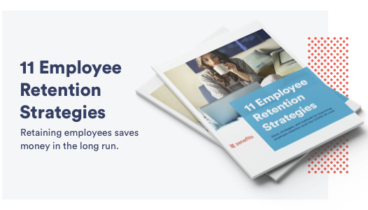What makes a remote-first company? We asked 4 businesses for their input.

Here’s what you need to know about transitioning your company to work from home permanently:
-
Cultivate trust — if you don’t have a culture of trusting your teams to get on with their work, “it’s never going to work,” Lizzie Benton of Liberty Mind says
-
Share organizational structure with your employees, and consider having a flat hierarchy or holocracy. “Excessive hierarchy often leads to micromanagement which is untenable on a high-functioning remote team,” Fadeke Adegbuyi of Doist says
-
Catalyze mindset change and level up emotional intelligence. “There needs to be a lot of soft skill upskilling for heighted emotional intelligence, so the culture can really prioritize the trust and communication needed,” Laurel Farrer of Distribute Consulting says
-
Amp up the communication — make sure to provide additional context or follow up on messages so things are as clear as possible
-
Choose the right tools — such as project management software and asynchronous and synchronous communication tools. “Embrace technology but also accept its limitations,” Clair Jones of Witty Kitty says
The COVID-19 crisis was the push many organizations needed to jump into permanent work-from-home arrangements. The arguments against remote work — lack of productivity, problems cultivating workplace culture, challenges with time zones — have proved flimsy and just plain wrong for many companies.
With successful remote experiments under their belts, some teams are choosing permanent WFH for the foreseeable future. But doing so is more than just closing the company HQ. Companies need to galvanize a mindset and cultural shift to transition from working from home to remote first.
What does it mean to be remote first?
It depends on who you ask.
Founder of remote work consultancy Distribute Consulting and remote work subject matter expert Laurel Farrer said there’s no clear definition of terminology in the nascent industry.
“For some teams, remote first means they began as a remote company and stay remote. For others, it’s a default to remote. There may be an office, but individuals work remotely unless they have to go in. Meetings are held exclusively online and there are no physical gatherings, even in the office,” Farrer says.
Almost all companies have some remote employees, and whether the company is remote first — or remote friendly — is decided in large part by how the company chooses to market its employer brand.
Fadeke Adegbuyi is a marketing manager on the all-remote team at Doist. She says remote first is a defining characteristic of a company. “A remote-friendly company allows people to work from home, while a remote-first company empowers employees to do their best work outside of the office,” Adegbuyi says.
“A remote-friendly company allows people to work from home, while a remote-first company empowers employees to do their best work outside of the office.”
Start your transition to permanent WFH with these steps
For success sticking to remote work, your company needs to be more intentional than simply telling everyone to work from home.
“Organizations need to understand that it’s not just the fact that your team is working from home that makes you remote. You need to shift away from how you currently do your business,” CEO of AppJawn Joe Cotellese says.
Cultivate trust
Cultivate trust on remote teams the same way you would in person — be consistent, dependable, and accessible. Give individuals opportunities to earn your trust, and follow through when given the chance to earn theirs.
“If you haven’t garnered a culture where you trust your team to get on with their work without you breathing down their neck, then it’s never going to work. Trust always has to come first,” Lizzie Benton, Culture Consultant and Founder at Liberty Mind, says.
Adegbuyi says it’s about implicit trust. “Rather than making new team members jump through hoops to demonstrate their value, trust is extended to new team members on day one. We trust every team member to get their work done and meaningfully contribute to their team and ongoing projects on a schedule that suits them from wherever they want to reside in the world.”
Share organizational structure
If you’re making the transition to permanent WFH, be clear about your organizational structure. There is no one perfect approach. What’s more significant is clarity and circulation, especially for new hires.
“Org structure becomes your sense of place as you come into the company, which is important with remote work because you miss a lot of context clues that otherwise exist in a traditional office,” Farrer says.
Remote companies that have been around for a while tend to be progressive. They embraced remote work before it was in vogue or before a global pandemic made it the only option. Because of this, we see a higher proportion of flat hierarchies or holocracies at remote-first companies than in traditional corporate structures.
This is true at Doist where they have a “relatively flat structure with a C-Suite, department heads, and individual contributors,” Adegbuyi says.
Their flatter structure helps them avoid the trap of micromanagement. “Excessive hierarchy often leads to micromanagement which is untenable on a high-functioning remote team,” she says.
“Org structure becomes your sense of place as you come into the company, which is important with remote work because you miss a lot of context clues that otherwise exist in a traditional office.”
Catalyze mindset change
A team’s greatest barrier to remote work is the management’s mindset. “Management mindset has to be updated in a few tactical ways,” Farrer says. Namely, a transition to asynchronous communication and results-based tracking is crucial.
Farrer also highlights the need for leveled up emotional intelligence. “Beyond that there needs to be a lot of soft skill upskilling for heighted emotional intelligence, so the culture can really prioritize the trust and communication needed in order to be successful in a remote work environment,” Farrer shares.
Amp up the communication
On remote teams, overcommunication is just communication. Without the in-person clues of paralanguage, it can be easy for the recipient to misconstrue or misinterpret a message. To bridge this gap, provide additional context or follow up until you feel confident in your communication.
One tenant of remote communication that experts espoused again and again is asynchronous communication — when you send a message without the expectation of an immediate response.
When teams rely on asynchronous communication, 2 things happen. One, employees feel empowered to find their own answers. Two, companies have an incentive to make it easy for them to do so, like by having clear places to find and share information.
Choose the right tools
Tools make remote work, work. But focus more on their role than the brand. Different remote teams have different needs, just like in-house teams, but generally speaking you’ll want to cover these bases:
- Project management software like Trello, Asana, or Todoist
- Asynchronous communication tool like Slack, Twist, or another intra-office messenger
- Synchronous communication tool like Zoom, Google Hangouts, or Skype
“My advice as a founder of a business that has always been 100% remote is to embrace technology but also accept its limitations,” Clair Jones, cofounder at the all-remote digital marketing agency Witty Kitty, says.
Tools enable communication, give visibility into project management, and help people collaborate. But, if relationships don’t have trust, you won’t have successful teams — no matter what tools they’re using.
Remote work is an emerging marketplace and we’ll see lots of innovation over the next 5 years. Farrer notes that the conversation and the media tone on remote work is likely to change if COVID-19 keeps us at home longer than we’d like. Be committed and organized in your transition to permanent WFH and seek out expert advice — but see beyond the shallow perks and enthusiasts.
“I like to think big. It’s about so much more than where we work. Remote work has the power to change lives — ours, our companies, and our communities. I know it sounds extreme but it’s true. The global socioeconomic benefits for people and organizations — those are the important conversations, much more so than ‘are you wearing pants right now,’” Farrer says.






